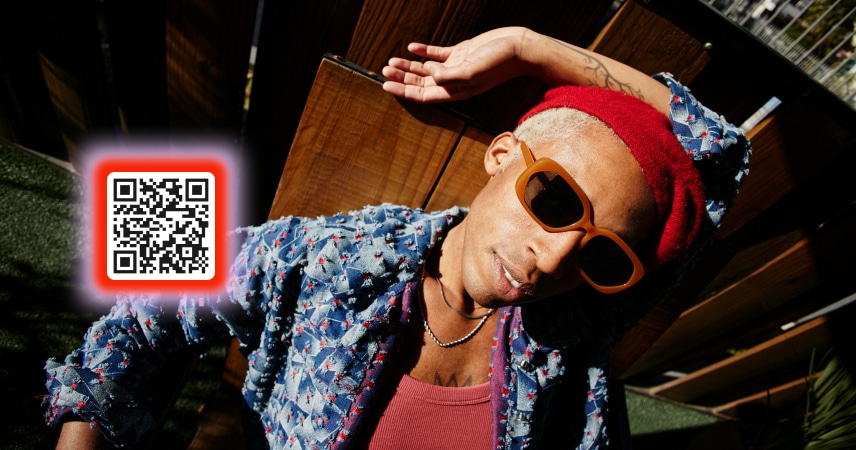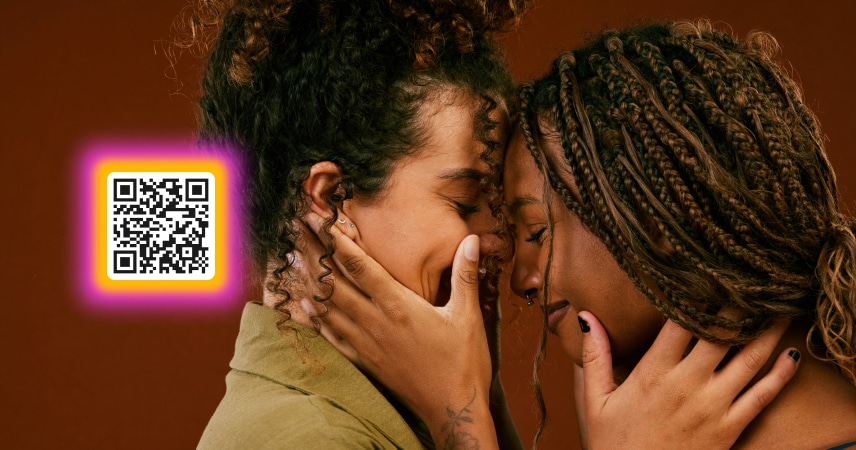
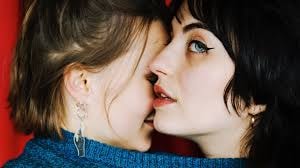
If you spend time in queer spaces online, or even not-so-queer spaces, you’ve probably encountered the term WLW. You may already know that it stands for women who love women or women loving women. Maybe not. If your internet search led you here, chances are you’re a little unsure WLW. Let’s clear that up. We’ll also dig into the term sapphic and what that means to the LGBTQ+ world.
WLW is an Umbrella Term
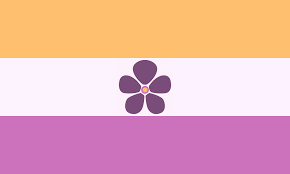
Think of WLW as an umbrella term or an all-encompassing term. It includes any and all women who are attracted to women, as long as they are comfortable identifying with that term. Any same gender loving woman can be WLW. That includes:
- Lesbian women
- Bisexual women
- Sqpphic women who don’t prefer other labels
- Non binary people who identify as lesbian or bisexual
- Pansexual people who see themselves as women
- Trans women or other femme aligned people
Basically, if a somebody’s personal identity includes being sexually or romantically attracted to women they might identify as women who love women – aka WLW.
Why Use WLW?

So, WLW refers to women who love women or woman aligned people, but why use that term? Well, the queer community loves initialism, and so do folks online. For many this is simply an inclusive and brief way to describe themselves or any other person with an attraction to other women.
WLW is Convenient And Inclusive
WLW is popular because it’s easy to use and type, just like LGBTQ+ or commonly used internet shorthand like LOL or BRB. It’s also inclusive. When many people encounter the word lesbian, they envision someone who was assigned female at birth who has a romantic or sexual attraction to other women. No, not every woman who identifies as lesbian fits that category. There are transgender and non-binary lesbians. Still, it’s an association many make, and WLW gives them an alternative.
Keep in mind that women some woman loving women enter women’s spaces, they may not know if they are truly welcome. TERFS, gender critical feminists, and some gatekeeper lesbians believe these spaces should be reserved exclusively for those who are born cis female. Nonbinary and trans people are often treated coldly or shut out altogether. When someone sees WLW used to refer to a sapphic space, it may communicate to them that they are welcome even if their gender identity does not align with their assignment.
WLW Clarifies
Women loving women or WLW gives us another phrase to add to our vocabulary, and that’s a good thing. It allows us to be clearer in our speech and writing. Often, when a speaker or writer chooses WLW over lesbian or bisexual, they have a reason for doing so. There’s a reason they didn’t choose lesbian or bisexual, but WLW. The intention is usually to be gender inclusive and to make it clear that they mean lesbians and other identities with a same sex attraction to women-identifying folks.
It Centers Women
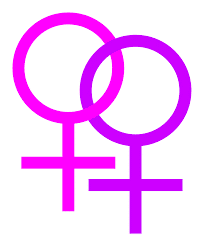
Woman loving woman and the related term sapphic are often used as alternatives to lesbian or bisexual when discussing women who are attracted to other women. That’s because many of the words and phrases used to describe sexual orientation were created within a patriarchal framework. This framework treats sexual orientation as a hierarchy with heterosexuality being superior – particularly male heterosexuality. Additionally, these terms have been used historically to pathologize LGBTQ+ folks.
WLW is More Racially And Culturally Inclusive
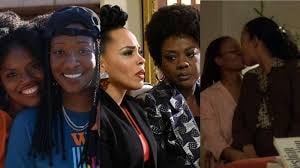
The term WLW (women loving women) has gained traction in queer communities – especially among non-white queer people. It is seen as a more racially and culturally inclusive alternative to lesbian. In fact, it has origins in the black community.
Lesbian has often been used to describe cis women attracted to women. The word and its usage is largely shaped by Western feminist ideology which has been historically dominated by white women. This has often been at the expense of the realities and relationships of Black, Indigenous, and other gay people of color.
Many members of non-white communities perceive the term lesbian as entangled with whiteness and culturally limiting. For them, it fails to reflect the intersections of sexual orientation with race and gender. For queer women of color, WLW is an umbrella term that is more inclusivity and is not burdened by a history of racial exclusion. It also embraces those who are not cisgender sapphics to include those whose gender identity doesn’t fit into binary categories. WLW also includes those whose relationships and understanding of gender and family are not defined by western norms.
While it isn’t universal, terms like WLW, woman-aligned, and sapphic are often preffered in these communities because they reflect lived experiences with identity, attraction, and relationships where white-centered and binary frameworks aren’t always relevant. For many, there’s more to WLW than gender inclusivity. Its about reclaiming and using language in a way that makes sense and is relevant. This applies to folks whose experience of being a queer woman or sapphic person of color means navigating heteronormativity and racism.A well-respected author and scholar argues that the ma instream lesbian identity often:
“Failed to account for the specific cultural, familial, and spiritual dynamics of black queer life.” – Alexis Pauline Gumbs
The adoption and acceptance of WLW offers pushback against these erasures. It creates room for other sapphics to exist and define themselves in a way that works for them.
It May Protect Against Online Censorship And Harassment
Initialisms, code-words, and even dogwhistles are frequently used on the internet as a way to get around censorship algorithms or to subtly communicate with like-minded folks. Sometimes, it’s used with nefarious intent. For example, white supremacists frequently use dogwhistles to make hateful statements while avoiding terms that would get them banned from most online spaces.
In other instances, alternative words and phrases are used to allow for honest, authentic communication while avoiding censorship by moderation systems that often cannot differentiate when a word or phrase is intended hatefully or not. Take the word queer as an example. Many LGBTQ+ people embrace the term. However, it may be filtered out as hate speech on some platforms. So, folks may use q slur instead. Even a widely accepted word like gay can lead to censorship
Then there’s the issue of doxxing and harassment. individuals who are aligned with hate groups and bots may seek out content that contains words like transgender, sapphic, and lesbian to target LGBTQ+ community members. WLW may be less likely to draw that kind of negative attention.
Sapphic as Identity, Aesthetic, and Community
Like WLW, sapphic is often used as a broader, umbrella term. Where lesbian often means cis women who are attracted to other cisgender women, sapphic refers to both a broader attraction as well as identity. It is a blend of sexuality, gender, and culture. Sapphic gives people a chance to self-identiy in a way that feels authentic. This is particularly true for trans or non binary people who may not align with labels such as lesbian or bisexual.
Moving beyond attraction and identity, sapphic is often use to describe art, relationships, fashion, aesthetics, and community dynamics that prioritize both same gender desire and connection. Sapphic isn’t just who you love. It’s how you present yourself and navigate the world around you.
WLW and the Language of Evolving
The term lesbian, the word bisexual, and even the term sapphic often imply a fixed and final identity mark. However, not everyone knows exactly who they are or how to define who they are attracted to. That’s okay. In that case, many women choose WLW. It’s a descriptive, not prescriptive way to self-describe and be open about feelings for other women without exclusively labeling oneself.
For one person it might be a temporary or transitional label. It’s something they use while exploring identity. For another, it’s as permanent for them as the term sapphic or lesbian might be to another woman. It fits them just as well as bi or lesbian might be for another. The term WLW may feel more affirming or intersectional. This is especially true for trans or nonbinary people who weren’t assigned female at birth.
Understanding WLW in a Global Context
Terms like lesbian, gay, and bi were created within Western frameworks around sexuality and gender identity. These constructs don’t always map to the lived experiences of people worldwide. WLW can serve as an alternative that works within other cultural frameworks.
WLW and a Connection to Love And Desire
WLW can be used to describe identity, but also to describe desire that goes beyond sex. Women loving women describes a deeper romantic, emotional, and physical connection between women in a way that fosters a sense of community. That’s a revolutionary way of viewing things in a culture where queerness and adjacent terms are often reduced to sexual activities in a way that is devaluing and reductivist. WLW frames love between women as deep, rich, and as important as any other love.
What is The Origin of The Terms WLW And Sapphic?
There is no definitive example or data that directly attributes the term sapphic or wlw to a specific person or piece of writing. The initialism WLW is fairly modern, but used in its longer form, the phrase has been around for quite a long time. Many believe it was first used during the queer black movement during the Harlem Renaissance. Others attribute it to the separatist feminist movement in the 1970s.
Origin of The Term Sapphic

It is much easier to pin down the meaning of the term sapphic and lesbian – since the two are intertwined through etymology. The word sapphic is derived from the name Sappho. She was a Greek poet from the island of Lesbos in Ancient Greece. Lesbos, obviously, is the origin word for lesbian. She wrote lyric poetry about the deep bonds formed by women who were attracted to other women. Only limited examples of her work remain today. However, it showcases themes of female beauty, longing, desire, and connection. Queer women and gender diverse people can use Sappho and her poetry to connect themselves to a historical community that has existed for centuries.

Violets have been associated with sapphic people throughout history and that is also rooted in sapphic love and history. Sappho’s poems mention the women she admired wearing garlands of violets and roses. Later, in the 19th and 20th centuries, women would use violets as a subtle symbol that they were attracted to women. For example, they might wear a violet in the buttonhole of a coat or use a bouquet of violets as a calling card for other sapphic people. Today, the violet flower and its color are still symbolic of sapphic love. It’s even part of the sapphic flag.
The word sapphic connects people to more than love between two women. It defines them as part of a long literary and cultural tradition that honors passion, creativity, feminine connection.
Why The Term WLW Matters
Language is not neutral. It shapes our understanding of one another and allows people to describe themselves in the most accurate way possible. Using a different descriptor like WLW or sapphic tells us how a person sees themselves and the community they belong to. In the case of WLW, it allows people to describe the complex realities of who they love, how they relate to their gender, and their worldviews.
Let’s Talk About Labels in Queer Communities
Labels, or descriptors if you prefer, can be extraordinarily helpful. They allow us to better understand ourselves. The label we choose reflects that we’ve taken time to understand how we view ourselves, our sexuality, identity, and how we want the world to see us. Labels around sexuality and gender identity also help us fine likeminded people. When so many gay, lesbian bisexual, sapphic, and trans folks struggle with self-concept and finding their place, labels can help folks find their center.
Those are the good things about labels. Unfortunately the LGBTQ+ community has a way of weaponizing labels against its own. Worse, the people who are often targeted are the ones who have the biggest need for belonging and community in their life. They may be excluded for adopting a label like sapphic later in life, or told they aren’t gay enough because they once identified as bi. Some who have been LGBTQ+ for quite awhile may even mock newer identity labels and those who choose them.
It’s important to remember that labels should always be self-defined. Also, they are descriptive not prescriptive. In other words, they reflect how the person sees themselves. That means that each person must have the freedom to change their label, and that nobody owes anyone else a sexual or identity performance.
Finding Your Label – Or Not
Whether you feel confident in your label, are still exploring, or prefer to avoid categorizing yourself altogether – you are in the ideal place right now. If it helps you to explore your feelings until you find something that resonates, or you feel perfectly comfortable as you are, there’s no wrong way to go about this. The idea is to feel comfortable in your own skin – not conform to another person’s ideals.


